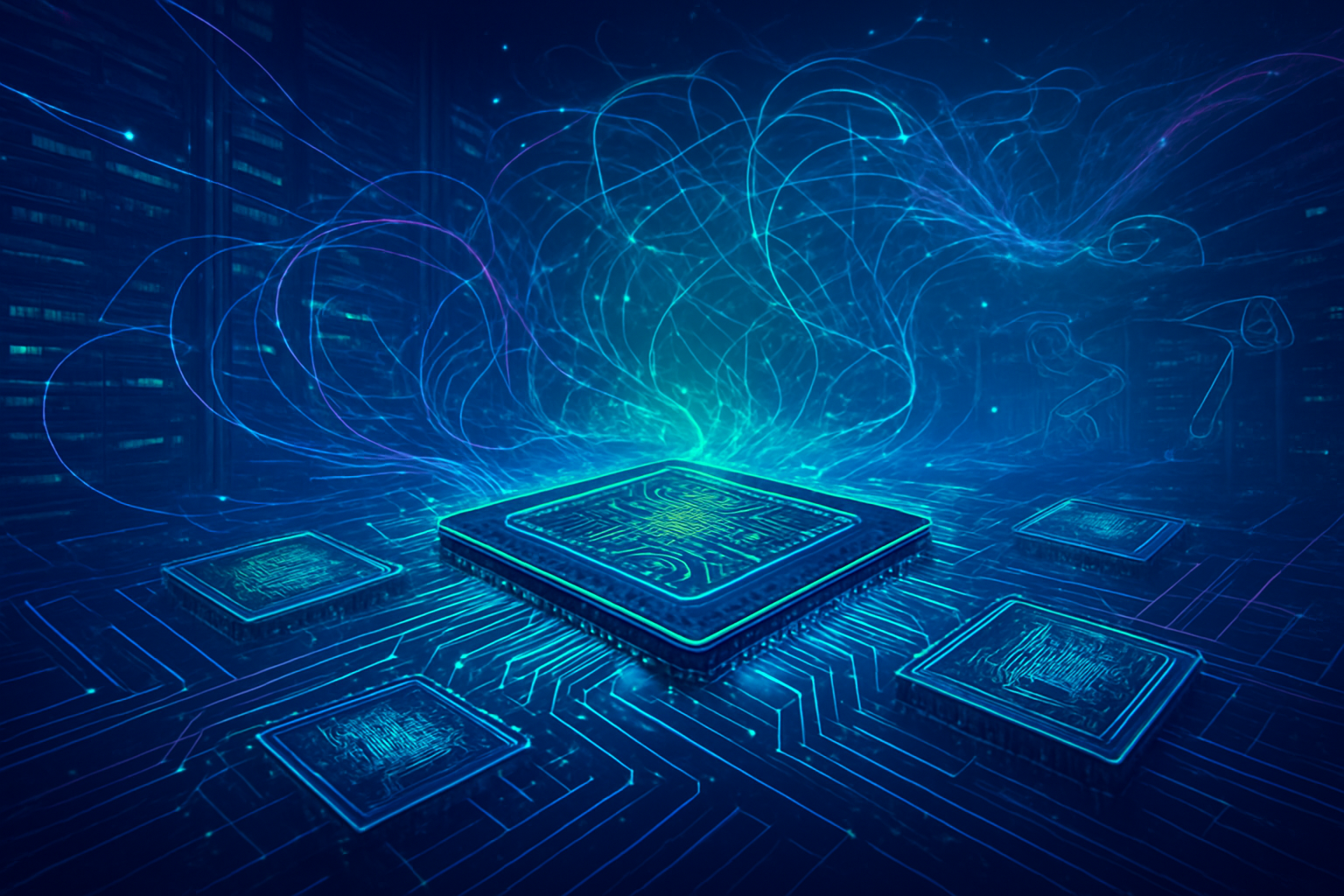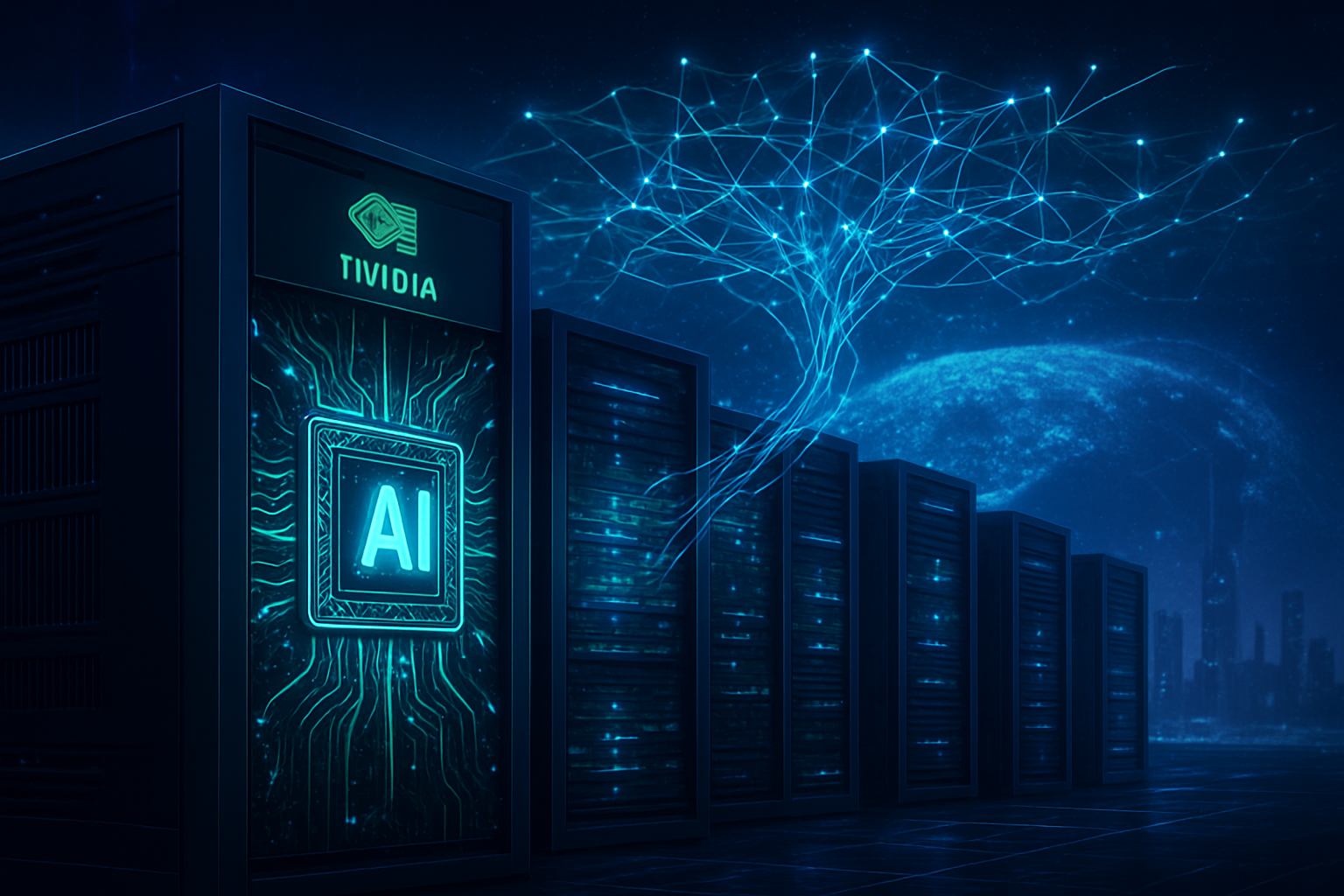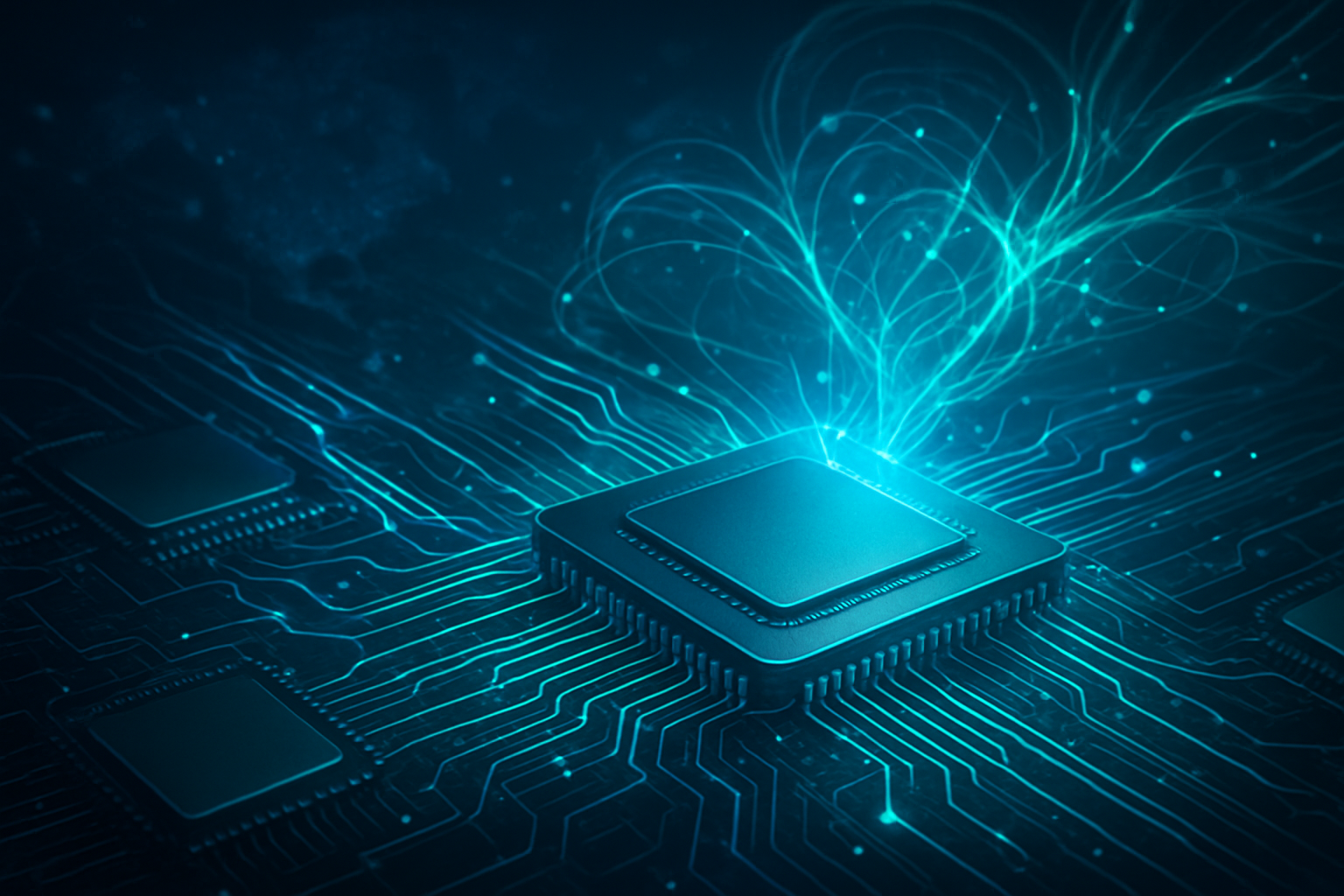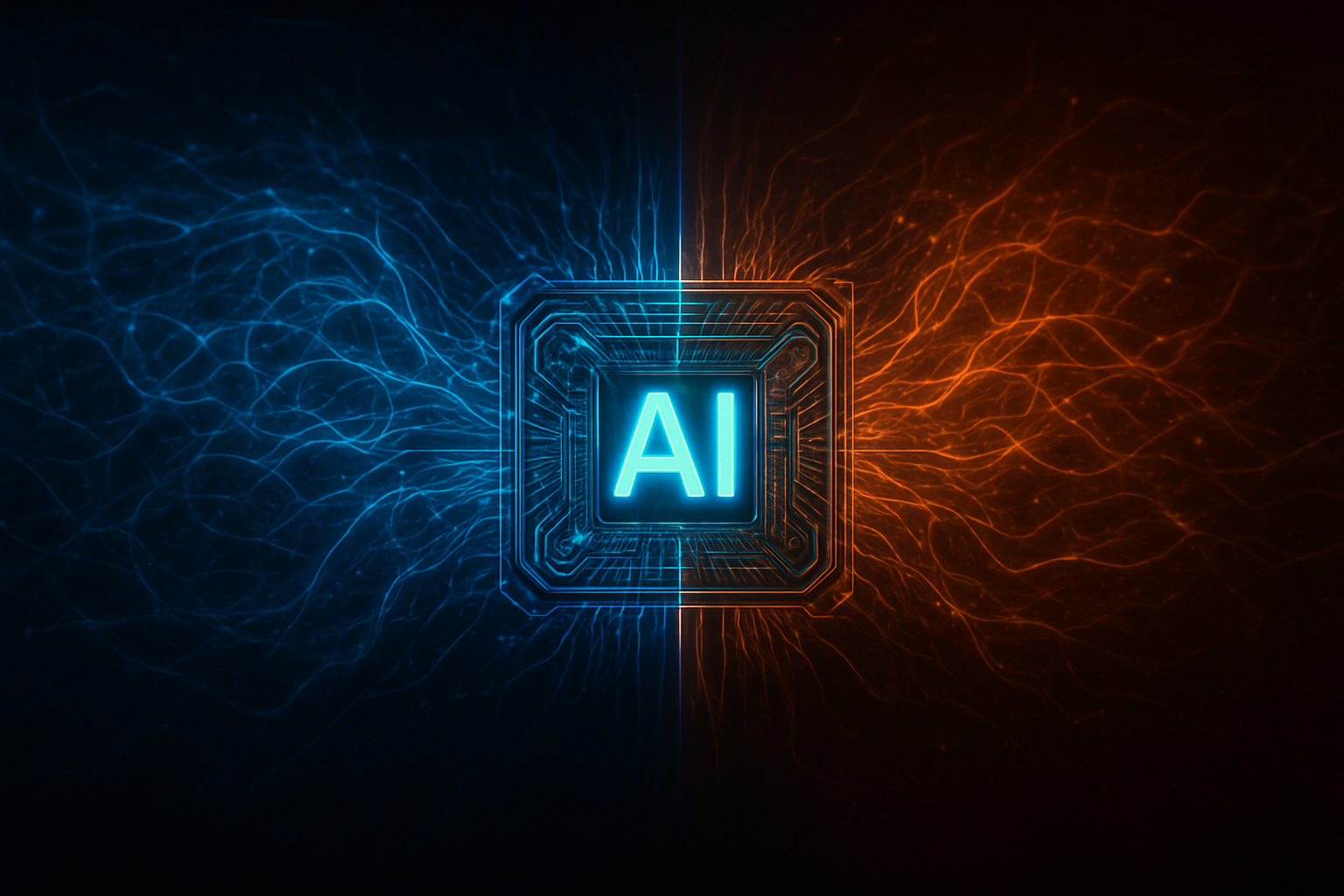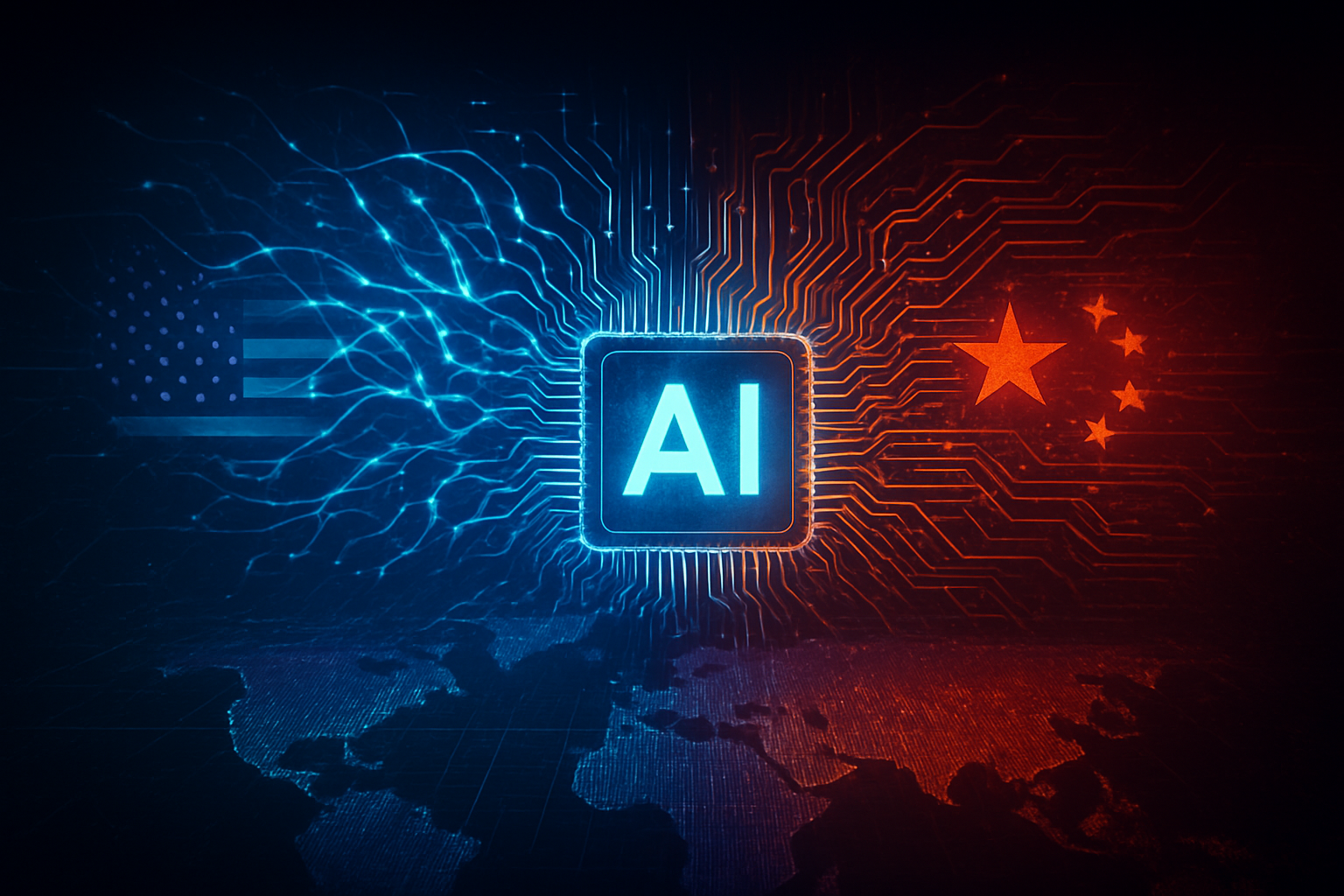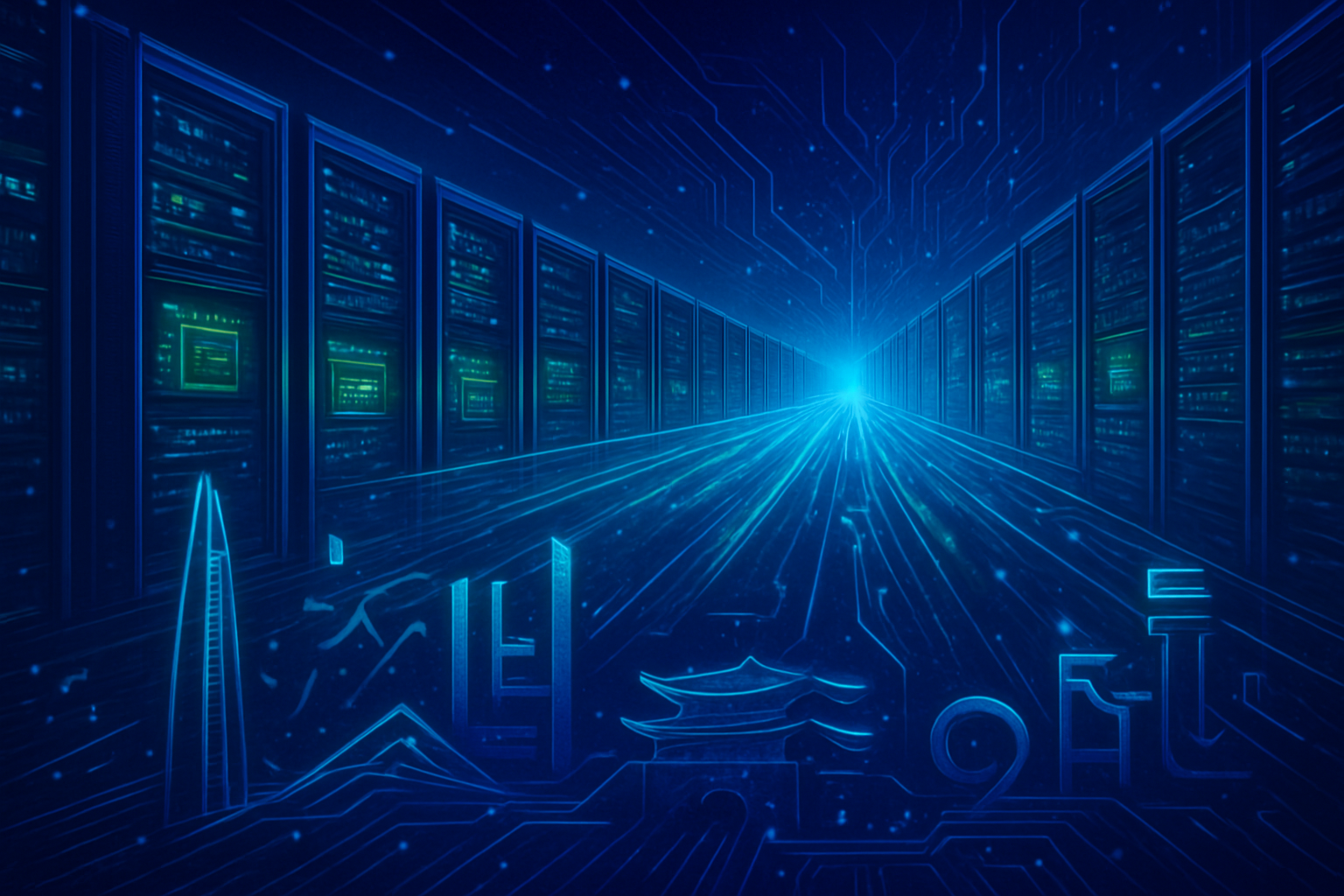As 2025 draws to a close, NVIDIA (NASDAQ: NVDA) stands as an unassailable titan in the semiconductor and artificial intelligence (AI) landscape. Fuelled by an insatiable global demand for advanced computing, the company has not only solidified its dominant market share but continues to aggressively push the boundaries of innovation. Its recent financial results underscore this formidable position, with Q3 FY2026 (ending October 26, 2025) revenues soaring to a record $57.0 billion, a staggering 62% year-over-year increase, largely driven by its pivotal data center segment.
NVIDIA's strategic foresight and relentless execution have positioned it as the indispensable infrastructure provider for the AI revolution. From powering the largest language models to enabling the next generation of robotics and autonomous systems, the company's hardware and software ecosystem are the bedrock upon which much of modern AI is built. However, this remarkable dominance also attracts intensifying competition from both established rivals and emerging players, alongside growing scrutiny over market concentration and complex supply chain dynamics.
The Technological Vanguard: Blackwell, Rubin, and the CUDA Imperative
NVIDIA's leadership in AI is a testament to its synergistic blend of cutting-edge hardware architectures and its pervasive software ecosystem. As of late 2025, the company's GPU roadmap remains aggressive and transformative.
The Hopper architecture, exemplified by the H100 and H200 GPUs, laid critical groundwork with its fourth-generation Tensor Cores, Transformer Engine, and advanced NVLink Network, significantly accelerating AI training and inference. Building upon this, the Blackwell architecture, featuring the B200 GPU and the Grace Blackwell (GB200) Superchip, is now firmly established. Manufactured using a custom TSMC 4NP process, Blackwell GPUs pack 208 billion transistors and deliver up to 20 petaFLOPS of FP4 performance, representing a 5x increase over Hopper H100. The GB200, pairing two Blackwell GPUs with an NVIDIA Grace CPU, is optimized for trillion-parameter models, offering 30 times faster AI inference throughput compared to its predecessor. NVIDIA has even teased the Blackwell Ultra (B300) for late 2025, promising a further 1.5x performance boost and 288GB of HBM3e memory.
Looking further ahead, the Rubin architecture, codenamed "Vera Rubin," is slated to succeed Blackwell, with initial deployments anticipated in late 2025 or early 2026. Rubin GPUs are expected to be fabricated on TSMC's advanced 3nm process, adopting a chiplet design and featuring a significant upgrade to HBM4 memory, providing up to 13 TB/s of bandwidth and 288 GB of memory capacity per GPU. The full Vera Rubin platform, integrating Rubin GPUs with a new "Vera" CPU and NVLink 6.0, projects astonishing performance figures, including 3.6 NVFP4 ExaFLOPS for inference.
Crucially, NVIDIA's Compute Unified Device Architecture (CUDA) remains its most formidable strategic advantage. Launched in 2006, CUDA has evolved into the "lingua franca" of AI development, offering a robust programming interface, compiler, and a vast ecosystem of libraries (CUDA-X) optimized for deep learning. This deep integration with popular AI frameworks like TensorFlow and PyTorch creates significant developer lock-in and high switching costs, making it incredibly challenging for competitors to replicate its success. Initial reactions from the AI research community consistently acknowledge NVIDIA's strong leadership, often citing the maturity and optimization of the CUDA stack as a primary reason for their continued reliance on NVIDIA hardware, even as competing chips demonstrate theoretical performance gains.
This technical prowess and ecosystem dominance differentiate NVIDIA significantly from its rivals. While Advanced Micro Devices (AMD) (NASDAQ: AMD) offers its Instinct MI series GPUs (MI300X, upcoming MI350) and the open-source ROCm software platform, ROCm generally has less developer adoption and a less mature ecosystem compared to CUDA. AMD's MI300X has shown competitiveness in AI inference, particularly for LLMs, but often struggles against NVIDIA's H200 and lacks the broad software optimization of CUDA. Similarly, Intel (NASDAQ: INTC), with its Gaudi AI accelerators and Max Series GPUs unified by the oneAPI software stack, aims for cross-architecture portability but faces an uphill battle against NVIDIA's established dominance and developer mindshare. Furthermore, hyperscalers like Google (NASDAQ: GOOGL) with its TPUs, Amazon Web Services (AWS) (NASDAQ: AMZN) with Inferentia/Trainium, and Microsoft (NASDAQ: MSFT) with Maia 100, are developing custom AI chips to optimize for their specific workloads and reduce NVIDIA dependence, but these are primarily for internal cloud use and do not offer the broad general-purpose utility of NVIDIA's GPUs.
Shifting Sands: Impact on the AI Ecosystem
NVIDIA's pervasive influence profoundly impacts the entire AI ecosystem, from leading AI labs to burgeoning startups, creating a complex dynamic of reliance, competition, and strategic maneuvering.
Leading AI companies like OpenAI, Anthropic, and xAI are direct beneficiaries, heavily relying on NVIDIA's powerful GPUs for training and deploying their advanced AI models at scale. NVIDIA strategically reinforces this "virtuous cycle" through investments in these startups, further embedding its technology. However, these companies also grapple with the high cost and scarcity of GPU clusters, exacerbated by NVIDIA's significant pricing power.
Tech giants, particularly hyperscale cloud service providers such as Microsoft, Alphabet (Google's parent company), Amazon, and Meta (NASDAQ: META), represent NVIDIA's largest customers and, simultaneously, its most formidable long-term competitors. They pour billions into NVIDIA's data center GPUs, with these four giants alone accounting for over 40% of NVIDIA's revenue. Yet, to mitigate dependence and gain greater control over their AI infrastructure, they are aggressively developing their own custom AI chips. This "co-opetition" defines the current landscape, where NVIDIA is both an indispensable partner and a target for in-house disruption.
Beyond the giants, numerous companies benefit from NVIDIA's expansive ecosystem. Memory manufacturers like Micron Technology (NASDAQ: MU) and SK Hynix see increased demand for High-Bandwidth Memory (HBM). Taiwan Semiconductor Manufacturing Company (TSMC) (NYSE: TSM), NVIDIA's primary foundry, experiences higher utilization of its advanced manufacturing processes. Specialized GPU-as-a-service providers like CoreWeave and Lambda thrive by offering access to NVIDIA's hardware, while data center infrastructure companies and networking providers like Broadcom (NASDAQ: AVGO) and Marvell Technology (NASDAQ: MRVL) also benefit from the AI buildout. NVIDIA's strategic advantages, including its unassailable CUDA ecosystem, its full-stack AI platform approach (from silicon to software, including DGX systems and NVIDIA AI Enterprise), and its relentless innovation, are expected to sustain its influence for the foreseeable future.
Broader Implications and Historical Parallels
NVIDIA's commanding position in late 2025 places it at the epicenter of broader AI landscape trends, yet also brings significant concerns regarding market concentration and supply chain vulnerabilities.
The company's near-monopoly in AI chips (estimated 70-95% market share) has drawn antitrust scrutiny from regulatory bodies in the USA, EU, and China. The proprietary nature of CUDA creates a significant "lock-in" effect for developers and enterprises, potentially stifling the growth of alternative hardware and software solutions. This market concentration has spurred major cloud providers to invest heavily in their own custom AI chips, seeking to diversify their infrastructure and reduce reliance on a single vendor. Despite NVIDIA's strong fundamentals, some analysts voice concerns about an "AI bubble," citing rapid valuation increases and "circular funding deals" where NVIDIA invests in AI companies that then purchase its chips.
Supply chain vulnerabilities remain a persistent challenge. NVIDIA has faced production delays for advanced products like the GB200 NVL72 due to design complexities and thermal management issues. Demand for Blackwell chips "vastly exceeds supply" well into 2026, indicating potential bottlenecks in manufacturing and packaging, particularly for TSMC's CoWoS technology. Geopolitical tensions and U.S. export restrictions on advanced AI chips to China continue to impact NVIDIA's growth strategy, forcing the development of reduced-compute versions for the Chinese market and leading to inventory write-downs. NVIDIA's aggressive product cadence, with new architectures every six months, also strains its supply chain and manufacturing partners.
NVIDIA's current influence in AI draws compelling parallels to pivotal moments in technological history. Its invention of the GPU in 1999 and the subsequent launch of CUDA in 2006 were foundational for the rise of modern AI, much like Intel's dominance in CPUs during the PC era or Microsoft's role with Windows. GPUs, initially for gaming, proved perfectly suited for the parallel computations required by deep learning, enabling breakthroughs like AlexNet in 2012 that ignited the modern AI era. While some compare the current AI boom to past speculative bubbles, a key distinction is that NVIDIA is a deeply established, profitable company reinvesting heavily in physical infrastructure, suggesting a more tangible demand compared to some speculative ventures of the past.
The Horizon: Future Developments and Lingering Challenges
NVIDIA's future outlook is characterized by continued aggressive innovation and strategic expansion into new AI domains, though significant challenges loom.
In the near term (late 2025), the company will focus on the sustained deployment of its Blackwell architecture, with half a trillion dollars in orders confirmed for Blackwell and Rubin chips through 2026. The H200 will remain a key offering as Blackwell ramps up, driving "AI factories" – data centers optimized to "manufacture intelligence at scale." The expansion of NVIDIA's software ecosystem, including NVIDIA Inference Microservices (NIM) and NeMo, will be critical for simplifying AI application development. Experts predict an increasing deployment of "AI agents" in enterprises, driving demand for NVIDIA's compute.
Longer term (beyond 2025), NVIDIA's vision extends to "Physical AI," with robotics identified as "the next phase of AI." Through platforms like Omniverse and Isaac, NVIDIA is investing heavily in an AI-powered robot workforce, developing foundation models like Isaac GR00T N1 for humanoid robotics. The automotive industry remains a key focus, with DRIVE Thor expected to leverage Blackwell architecture for autonomous vehicles. NVIDIA is also exploring quantum computing integration, aiming to link quantum systems with classical supercomputers via NVQLink and CUDA-Q. Potential applications span data centers, robotics, autonomous vehicles, healthcare (e.g., Clara AI Platform for drug discovery), and various enterprise solutions for real-time analytics and generative AI.
However, NVIDIA faces enduring challenges. Intense competition from AMD and Intel, coupled with the rising tide of custom AI chips from tech giants, could erode its market share in specific segments. Geopolitical risks, particularly export controls to China, remain a significant headwind. Concerns about market saturation in AI training and the long-term durability of demand persist, alongside the inherent supply chain vulnerabilities tied to its reliance on TSMC for advanced manufacturing. NVIDIA's high valuation also makes its stock susceptible to volatility based on market sentiment and earnings guidance.
Experts predict NVIDIA will maintain its strong leadership through late 2025 and mid-2026, with the AI chip market projected to exceed $150 billion in 2025. They foresee a shift towards liquid cooling in AI data centers and the proliferation of AI agents. While NVIDIA's dominance in AI data center GPUs (estimated 92% market share in 2025) is expected to continue, some analysts anticipate custom AI chips and AMD's offerings to gain stronger traction in 2026 and beyond, particularly for inference workloads. NVIDIA's long-term success will hinge on its continued innovation, its expansion into software and "Physical AI," and its ability to navigate a complex competitive and geopolitical landscape.
A Legacy Forged in Silicon: The AI Era's Defining Force
In summary, NVIDIA's competitive landscape in late 2025 is one of unparalleled dominance, driven by its technological prowess in GPU architectures (Hopper, Blackwell, Rubin) and the unyielding power of its CUDA software ecosystem. This full-stack approach has cemented its role as the foundational infrastructure provider for the global AI revolution, enabling breakthroughs across industries and powering the largest AI models. Its financial performance reflects this, with record revenues and an aggressive product roadmap that promises continued innovation.
NVIDIA's significance in AI history is profound, akin to the foundational impact of Intel in the PC era or Microsoft with operating systems. Its pioneering work in GPU-accelerated computing and the establishment of CUDA as the industry standard were instrumental in igniting the deep learning revolution. This legacy continues to shape the trajectory of AI development, making NVIDIA an indispensable force.
Looking ahead, NVIDIA's long-term impact will be defined by its ability to push into new frontiers like "Physical AI" through robotics, further entrench its software ecosystem, and maintain its innovation cadence amidst intensifying competition. The challenges of supply chain vulnerabilities, geopolitical tensions, and the rise of custom silicon from hyperscalers will test its resilience. What to watch in the coming weeks and months includes the successful rollout and demand for the Blackwell Ultra chips, NVIDIA's Q4 FY2026 earnings and guidance, the performance and market adoption of competitor offerings from AMD and Intel, and the ongoing efforts of hyperscalers to deploy their custom AI accelerators. Any shifts in TSMC's CoWoS capacity or HBM supply will also be critical indicators of future market dynamics and NVIDIA's pricing power.
This content is intended for informational purposes only and represents analysis of current AI developments.
TokenRing AI delivers enterprise-grade solutions for multi-agent AI workflow orchestration, AI-powered development tools, and seamless remote collaboration platforms.
For more information, visit https://www.tokenring.ai/.
